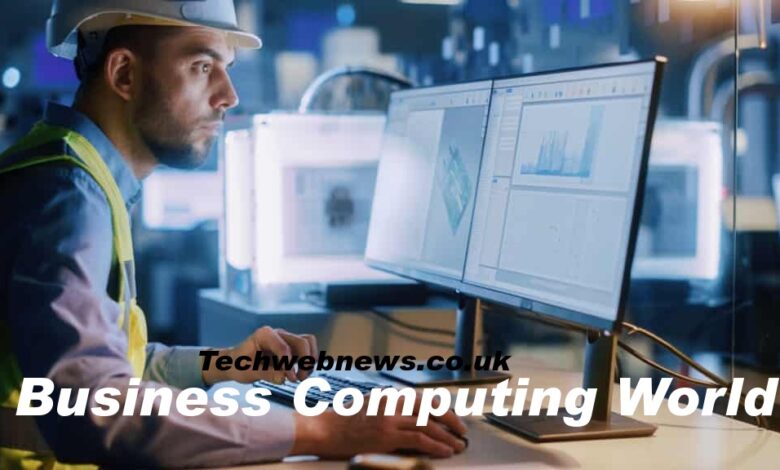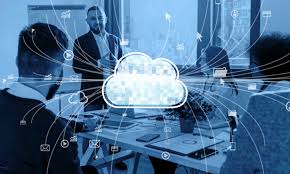Business Computing World: A Deep Dive into Modern Enterprise Technology

Introduction to Business Computing World
The term Business Computing World isn’t just a catchy phrase; it represents the evolving digital landscape where technology and business converge. Over the past few decades, businesses have transitioned from manual processes and paper-driven workflows to fully digital environments. Today, organizations run on computing power—from cloud-based platforms to artificial intelligence (AI) systems—making technology the beating heart of modern enterprises.
At its core, the business computing world refers to the ecosystem of tools, applications, and infrastructure that allow companies to operate efficiently in a competitive environment. Think of it as the digital nervous system of an organization, handling everything from communication and data management to decision-making and customer engagement. Without business computing, industries like finance, healthcare, retail, and logistics would not be able to function at the scale and speed we see today.
More than just hardware and software, this world also encompasses the people who interact with technology. Employees rely on digital tools to perform daily tasks, managers use analytics to make strategic decisions, and IT teams work behind the scenes to ensure systems stay secure and functional. In short, the business computing world is a vibrant, interconnected space where technology directly influences success.
The Evolution of Business Computing World

Business Computing World has come a long way since the early days of mainframes and bulky machines that filled entire rooms. Back in the mid-20th century, computing in business was primarily reserved for large corporations and government agencies that could afford the massive costs. These machines were used for complex calculations, data storage, and record-keeping, laying the foundation for modern enterprise technology.
The personal computer (PC) revolution of the 1980s brought Business Computing World closer to small and medium-sized businesses. Suddenly, organizations could use affordable desktops for word processing, spreadsheets, and database management. This democratization of technology opened the doors for innovation and competition. By the 1990s, businesses were embracing networks and the internet, unlocking entirely new ways to communicate and collaborate.
Fast forward to today, and the landscape has shifted yet again. Cloud computing, mobile devices, and artificial intelligence dominate the business computing world. Instead of buying expensive servers, companies now rent scalable cloud infrastructure. Instead of relying on fax machines or long phone calls, businesses collaborate in real-time using platforms like Slack or Microsoft Teams. This constant evolution shows that business computing is not static—it is dynamic, adapting to the demands of each era.
Cloud Business Computing World: The Backbone of Modern Business
If there’s one technology that defines the current era of Business Computing World, it’s cloud computing. At its simplest, the cloud allows businesses to store data and run applications over the internet instead of on local machines. This model eliminates the need for costly infrastructure and provides flexibility that was unimaginable just a couple of decades ago.
For startups and small Business Computing World, the cloud is a game-changer. It lowers entry barriers by offering affordable access to enterprise-grade tools. Instead of buying expensive software licenses, companies can subscribe to cloud-based services and pay only for what they use. This scalability allows businesses to grow without worrying about whether their technology can keep up.
For larger organizations, cloud Business Computing World offers global reach and improved disaster recovery. Data is no longer tied to a physical location, making it safer and more accessible. Teams working from different continents can collaborate as if they were in the same office, thanks to shared cloud platforms. Whether it’s storage, analytics, or machine learning, the cloud has become the foundation of the modern business computing world.
Artificial Intelligence and Automation
No discussion about the business computing world would be complete without mentioning artificial intelligence (AI) and automation. These technologies are transforming the way companies operate by taking over repetitive tasks, analyzing massive amounts of data, and even making predictions about customer behavior.
In practical terms, AI allows Business Computing World to work smarter. Customer service teams can deploy chatbots to handle common queries, freeing up human agents for more complex interactions. Marketing teams use AI-driven analytics to personalize campaigns and deliver better customer experiences. Finance departments rely on AI to detect fraudulent transactions in real time. In each case, automation reduces workload while improving accuracy.
The impact of AI goes beyond efficiency. It also opens the door to innovation. For example, predictive analytics help retailers anticipate demand, while healthcare organizations use AI to assist in diagnostics and treatment planning. As AI continues to evolve, its role in the business computing world will expand, blurring the line between human decision-making and machine intelligence.
Cybersecurity in the Business Computing World
With great computing power comes great responsibility. As businesses adopt more digital tools, they also face growing risks in the form of cyberattacks and data breaches. Cybersecurity has become a cornerstone of the business computing world, ensuring that sensitive information remains protected in an increasingly hostile digital environment.
One major challenge is the sheer volume of threats Business Computing World face today. Hackers target everything from small startups to multinational corporations, seeking to exploit vulnerabilities in systems. Common attacks include phishing emails, ransomware, and data theft, all of which can disrupt operations and damage reputations.
Businesses now invest heavily in cybersecurity measures such as firewalls, encryption, and multi-factor authentication. Many organizations also conduct employee training programs, recognizing that human error is often the weakest link in security. In the business computing world, cybersecurity is no longer optional—it’s a necessity for survival.
Remote Work and the Digital Workplace
The global shift toward remote work has reshaped the business Business Computing World landscape in profound ways. Thanks to high-speed internet and powerful collaboration tools, employees no longer need to be physically present in the office to be productive. The COVID-19 pandemic accelerated this trend, proving that entire industries could function remotely without missing a beat.
Tools like Zoom, Microsoft Teams, and Google Workspace have become household names, enabling real-time communication and collaboration. Project management platforms like Asana and Trello keep teams aligned, while cloud storage ensures that documents are accessible from anywhere. This digital workplace is powered entirely by business Business Computing World technologies.
But remote work also raises new challenges. Companies must balance flexibility with accountability, ensuring that employees remain engaged and productive. At the same time, IT teams must secure networks and devices outside traditional office environments. In many ways, the digital workplace highlights both the opportunities and complexities of the modern business computing world.
The Future of Business Computing World
Looking ahead, the business computing world is poised for even greater transformation. Emerging technologies such as quantum computing, blockchain, and the Internet of Things (IoT) promise to reshape industries in ways we can barely imagine. These innovations will push the boundaries of what businesses can achieve, creating new opportunities and challenges along the way.
Quantum Business Computing World, for instance, could revolutionize fields like logistics, finance, and healthcare by solving problems that are currently too complex for traditional computers. Blockchain is already changing the way businesses handle transactions, offering transparency and security in supply chains and financial systems. Meanwhile, IoT devices are creating smarter workplaces and more connected customer experiences.
While the exact future remains uncertain, one thing is clear: the business computing world will continue to evolve. Companies that embrace innovation and adapt quickly will thrive, while those that resist change may struggle to keep up. The fusion of business and technology is not a passing trend—it’s the new reality.
Conclusion
The business computing world is vast, dynamic, and integral to how organizations operate today. From the early days of mainframes to the current dominance of cloud computing and AI, technology has been the driving force behind business growth and innovation. As we look to the future, emerging technologies will continue to push boundaries, reshaping industries and redefining possibilities.
For businesses, staying informed and adaptable is the key to thriving in this digital age. Computing is no longer a support function—it’s a strategic advantage. Those who understand and embrace the business computing world will not only survive but also lead the way into a more connected, efficient, and innovative future.



